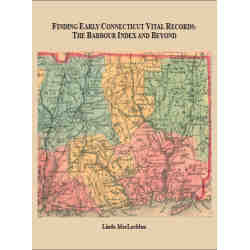Description
In this comprehensive collection of genealogies, noted Maryland genealogist Robert Barnes has put together the most authoritative account of the British origins of Maryland families ever published. Families included in this groundbreaking work were chosen by Mr. Barnes based on the following criteria: (a) there was some reason to believe that the families’ home parish in Britain had been identified; (b) the families had taken root and left descendants in the New World; and (c) most had arrived before the year 1800. Source materials on which these genealogies are based derive from a combination of Mr. Barnes’s own extensive research over the past thirty years and the pioneering work on the origins of Maryland families made by earlier researchers such as Henry F. Waters, Lothrop Withington, Harry Wright Newman, Jack and Marion Kaminkow, and, more recently, Peter Wilson Coldham.
Some British sources used by Mr. Barnes include printed and manuscript genealogies, county histories and heraldic visitations, works on the peerage and landed gentry, and distinguished periodicals such as The Genealogist, Harleian Society Parish Register Series, and Collectanea Topographica et Genealogica. Clues in Maryland source records were discovered in land records, county and provincial court records, parish registers, probate records, printed and manuscript family histories, and in dozens of well-known periodicals specializing in genealogy and family history. The result is a world-class combination of genealogical source materials that extends the reach of Maryland genealogy well beyond what has been known up until this point.
Altogether this work contains information on nearly 500 individuals and families whose descendants came to Maryland. Many of the families, such as the Frowicks, Lewkenors, and Wroths, did not come to Maryland themselves but were ancestors through the marriage of daughters of those who did. Some families, such as the Blakistons, Towneleys, and Keenes, sent more than one individual to Maryland. One hundred and nineteen of the arrivals (24.1%) had a right to bear a coat of arms; 58 families (11.7%) had a well-proven royal descent, while another 73 (14.6%) had a professional, clerical, or mercantile background. The remaining families comprised indentured servants, convicts (only 6), and a number of individuals of undetermined status. More than half of all settlers came from London and the Home Counties and the northern counties of England.
In general, families are traced back two or more generations in England and brought forward two or more generations in Maryland. A clear, well-formatted text of more than 500 pages is followed by a 140-page index containing the names of 20,000 individuals–remarkable in themselves in that they can be said to have seeded the population of early Maryland.






Reviews
There are no reviews yet.